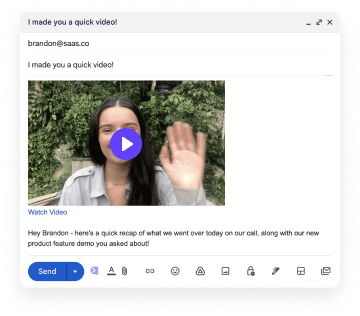Business-to-business marketing can be a tough job for sales and marketing teams. Such teams in the B2B industry need all the help they can get, when it comes to marketing.
Fortunately, one of the best ways to marketing to work is through video content. Did you know that 80% of marketers benefited from incorporating videos in their B2B marketing strategies during the COVID-19 pandemic in 2020?
With videos, you’re:
- Telling stories (e.g., testimonials, success stories, etc.)
- Selling products and services
- Endorsing other businesses (i.e., collaborations)
- Announcing special B2B events, etc.
Now, in order to make videos for your B2B marketing company, you’ll need to have a video script. But not to worry! This essential guide will show you step-by-step – 6 steps, actually – on how to craft a great video script!
So, let’s dive right in!
Create A Brief
“Before you can have a script, you must have a brief,” says Phillip Johnson, a script writer at Boomessays and UKWritings. “The brief will serve as the foundation of your script. This is especially important for B2B marketers to consider, because a video script has to market to a certain audience, a certain premise, and so on.”
With that said, starting with the brief has you doing the following to ensure a good foundation for your script:
- Know your audience.
- Talk about topics, subjects, etc. that are relevant to your video.
- Establish a solid goal for your video.
- Anticipate any questions that your viewers might have.
- Showcase any interesting things that may entice your viewers.
- List key takeaways that are important to your video.
- Prioritize a good call-to-action.
In hindsight, you’re creating a formula of how your script will go. This leads to the next step…
Write An Outline
The bigger (and more solid) foundation of your video lies in the script outline. The outline will serve as the skeleton of your video – whereas the brief is more focused on what type of video it is. In other words, while the brief is the “Aha!” part of your video, the outline brings that “Aha!” to life.
Therefore, the outline should consist of the following parts:
- Introduction
- A story/scenario
- Introducing the topic
- Body
- The Why
- The How
- Examples (if applicable)
- Any testimonials or success stories
- Conclusion
- A call-to-action
As you can see, there are many parts of the script that will be essential to the final project.
Just keep in mind: You’re not here to regurgitate generic topics and subjects, and then call it a day. No. You’re creating a video to help you in your B2B marketing endeavors.
In other words, don’t just make this video for you – think about your potential clients. That’s called a prospecting video, according to Sendspark. Here are some examples of prospecting video that you might want to consider, when creating your outline:
- Selfie videos
- Prop videos
- Webcam videos (with screen captures)
- Problem-solution videos, etc.
Write A Good Intro
Keep in mind that your video will be competing with other videos online, especially when it comes to B2B marketing. Take a look at how most YouTube videos start. Most videos have a quick intro, which grabs people’s attention. That’s the beauty of marketing. You grab that attention on the first try.
So, when writing your video script, think about how you want to structure your video from the start. Think about how you’ll hook your audience in the first few seconds of the video.
Check out these great examples for writing a great introduction:
- Starting with a clip of a “sneak peek” of what the video is going to be able
- Greeting the viewers with a relatable story
- Starting with a cool montage of what’s to come in the video, etc.
Wave.video suggests that you get your intro between the 3- to 7-second mark. So, when writing your script, figure out ways to get the point across, while making the hook.
Divide Your Script Into Sections
Once you have a good introduction, you’ll need to get your points across. In your video, you’re explaining why your topic is important, and how that is. This is especially important in B2B marketing because, again, you’re there to get your message across – that’s part of your job as a marketer.
Therefore, make sure that you divide your script into sections. Make sure that you consider the following when dividing your script:
- Remember that you’re writing to potential B2B clients. Keep in mind that all clients are different, when it comes to age, industry, occupation, and so on. First, study who your audience is, and then speak directly to them in your video. Make sure that your audience will be okay with either a long explainer video or a short-form video.
- Be professional, but write conversationally. You want to be relatable to your potential clients. Clients have to be able to trust you, as they watch your video. What will you say to them? How can you win them over with what you have to say? Remember: Be human, not robotic. Be trustworthy, not generic.
- Take every single word into account. In other words, you’ll be scripting every single word. Words matter in a script; so, if a few words sound off, then it’ll make your video look and sound awkward. Therefore, there’s no room for “winging it,” when it comes to script-writing. You want your script to look and sound good, before you start shooting your video.
- Your script must be thorough. That means that you’ll be adding and fixing details, as you write the script. You want things to flow well in the script, before you shoot the video. Plus, you’ll be working things like dialogue, characters, multiple shots, etc. into your script as you go.
These handful of tips are essential to making sure that your script is well-organized. While you’ll still have plenty of time to edit your script, it’s still important to establish organization in your script early on in the script-writing process.
Be Concise
“Marketing requires that you’re consistent in your messaging,” says Joshua Campbell, a project manager at Paperfellows and Stateofwriting. “When writing a video script, you have to be concise. In other words, if your marketing videos tend to be short, for example, then your script has to be short. If you see that your short-video script is too long, then you might want to make some edits and adjustments.”
Once you edit your script plenty of times, then it’s time to rehearse to ensure that it’s a workable script.
Rehearse Off-Camera
Lastly, rehearsal is key to ensuring professionalism in your B2B marketing video.
At this time, take the time to read your script aloud. If you spot any awkward bits in the script when you read it, then fix it right away. You might want to practice the script with other people, so that you get more feedback on how to improve it.
Most importantly, keep rehearsing without rolling the tape. If you find that you’ve practiced enough, only then can you turn the camera on.
Conclusion
Ultimately, B2B marketing relies heavily on great content from your company. So, B2B sales and marketing teams, take note! These tips will help you make the best video content online. And it all starts with a good, strong script!
If you need more inspiration for what to say in your video, check out our example video scripts for sales prospecting.
You got this! Best of luck to you B2B marketers everywhere!




